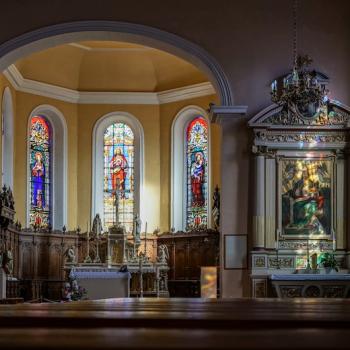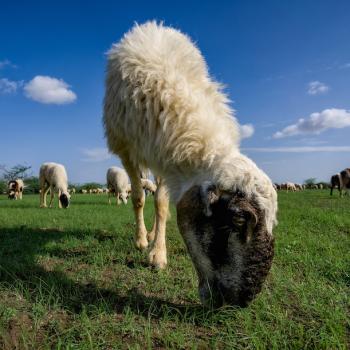It seems I’m always on the schedule to preach on Trinity Sunday no matter what church I’m in. Since I find the Trinity to be among the coolest insights of Christian theology, I appreciate this. It is something to be repeatedly reminded of. Every year, I deliver roughly the same sermon on Trinity Sunday for this reason: we need this reminding. The Trinity is often confusing to people (for decades, it was for me). Because we often don’t get it, we prefer not to talk about it. Yet when understood, the image can be quite helpful—perspective-altering even.
So, one God in three parts: God as Creator; God as the Christ (meaning, the incarnated presence of God dispersed throughout all of creation), and God as the imminent, ever-present, God-with-us Spirit. Like I said, for decades, Trinity seemed complicated to me. But then I learned of the 4th-century Christian theologians based in present-day Turkey, known as the “Cappadocian fathers and mothers.” Of all the ways of talking about God as Trinity, I have found their imagery and language most helpful. It’s a bit of theological genius, really—which is why it has stood out and remained strong for almost 2000 years.

These early Christians called the Trinity a ‘circle dance’ (perichoresis). God as a three-partner, circular dance. Now try to imagine three dancers engaged in a complex dance—interlocking and cooperating in all of their movements, separating only momentarily to rejoin again in a pattern of complex beautiful choreography, depending on one another in each graceful configuration of bodies. Now note it’s impossible to imagine such a dance with just one of the dancers. You can’t do it. It is the interlocking circle, the relationship of the dance, that gives the dance its very character. The interrelationship of the dancers is the dance. This three-person circle dance is to me the best image Christian theologians have presented for explaining the Trinity.
Increasingly, theologians are noticing that this image of a relational, circular dance as the basis of all reality dovetails with what science increasingly shows us. Indeed, scientific insights help us appreciate the beauty of our tradition in imaging/symbolizing God as Trinity. What science demonstrates, particularly at the subatomic level, is that relationship is the very nature of reality: nothing exists apart from anything else. And what the theology of the Trinity has been trying to show us, what it intuited almost two thousand years before quantum physics is that relationship is also and has always been the very nature of God. (Note: other religions also intuited this millennia ago.)
Divine nature is all about relationship. The nature of reality, as science is discovering, can be seen as a reflection of Divine nature. God is relationship; this world of ours is relationship. Nothing exists apart from or autonomous from anything else. There is no one ‘Almighty’ within interlocking relationship. God is a beautiful ‘circle dance’ of equal partners, and so is this thing we call Life.
One of the features of our country at this time, which many observers are noting, is an increase in disconnectedness, un-rootedness, and loneliness. This combination leads to a plethora of social problems. It has historically, and it is today. Our theology of the Trinity, along with nature, show us how contrary to created order is disconnectedness. We need connection in order to thrive. We need to be rooted in others—in family, or communities that function like family, in shared universes of symbolism and story. A society of disconnected individuals quickly becomes sick, and we are seeing that all around us. The theology we have of the Trinity is a vivid reminder from our tradition that the fundamental nature of reality is connection, a cooperative dance. It is making one-ness out of more than one.
Trinity shows us, in a practical, beautiful way, who God is. Perhaps even more importantly, it shows us who we are.














